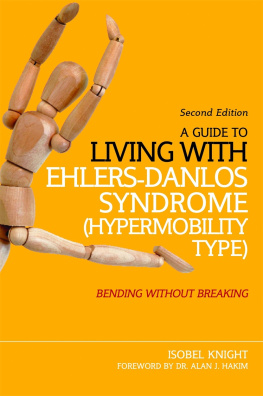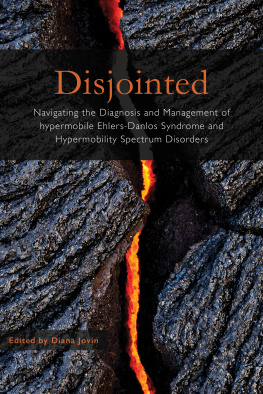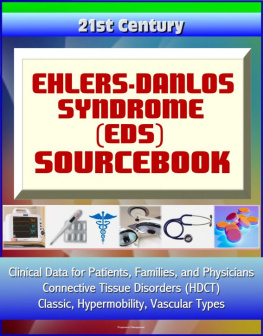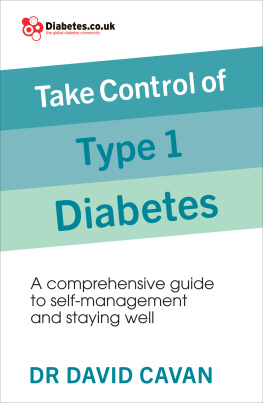
A Guide to Living with Ehlers-Danlos Syndrome (Hypermobility Type)
by the same author
Using the Bowen Technique to Address Complex and Common Conditions
John Wilks and Isobel Knight
ISBN 978 1 84819 167 9
eISBN 978 0 85701 129 9
A Multidisciplinary Approach to Managing Ehlers-Danlos (Type III) Hypermobility Syndrome
Working with the Chronic Complex Patient
Isobel Knight
With contributions from Professor Howard Bird, Dr. Alan J. Hakim, Rosemary Keer, Dr Andrew Lucas, Dr Jane Simmonds and John Wilks
Foreword by Professor Rodney Grahame
ISBN 978 1 84819 080 1
eISBN 978 0 85701 055 1
of related interest
Body Intelligence Meditation
Finding Presence through Embodiment
Ged Sumner
ISBN 978 1 84819 174 7
eISBN 978 0 85701 121 3
The Mystery of Pain
Douglas Nelson
ISBN 978 1 84819 152 5
eISBN 978 0 85701 116 9
Breaking Free from Persistent Fatigue
Lucie Montpetit
ISBN 978 1 84819 101 3
eISBN 978 0 85701 081 0
Freeing Emotions and Energy Through Myofascial Release
Noah Karrasch
Foreword by C. Norman Shealy
ISBN 978 1 84819 085 6
eISBN 978 0 85701 065 0
Meet Your Body
CORE Bodywork and Rolfing Tools to Release Bodymindcore Trauma
Noah Karrasch
Foreword by Ralph Harvey, MD
Illustrated by Lovella Lindsey Norrell
ISBN 978 1 84819 016 0
eISBN 978 0 85701 000 1
Managing Depression with Qigong
Frances Gaik
ISBN 978 1 84819 018 4
eISBN 978 0 85701 006 3
A Guide to Living with Ehlers-Danlos Syndrome (Hypermobility Type)
Bending without Breaking
SECOND EDITION
Isobel Knight
Foreword by Dr Alan J. Hakim

LONDON AND PHILADELPHIA
are kindly provided by Alex Stollery
on p.34 reprinted with kind permission from Ruby from the Hypermobility Association Patient Forum
on p.51 and Box 3.2 on p.54 are reprinted with the kind permission of the Hypermobility
Syndrome Association
First published in 2015
by Jessica Kingsley Publishers
73 Collier Street
London N1 9BE, UK
and
400 Market Street, Suite 400
Philadelphia, PA 19106, USA
www.jkp.com
Copyright Isobel Knight 2015
Foreword copyright Dr Alan J. Hakim 2015
Front cover image source: iStockphoto. The cover image is for illustrative purposes only, and any person featuring is a model.
All rights reserved. No part of this publication may be reproduced in any material form (including photocopying or storing it in any medium by electronic means and whether or not transiently or incidentally to some other use of this publication) without the written permission of the copyright owner except in accordance with the provisions of the Copyright, Designs and Patents Act 1988 or under the terms of a licence issued by the Copyright Licensing Agency Ltd, Saffron House, 610 Kirby Street, London EC1N 8TS. Applications for the copyright owners written permission to reproduce any part of this publication should be addressed to the publisher.
Warning: The doing of an unauthorised act in relation to a copyright work may result in both a civil claim for damages and criminal prosecution.
Library of Congress Cataloging in Publication Data
Knight, Isobel, 1974
A guide to living with Ehlers-Danlos syndrome (hypermobility type) : bending without breaking / Isolbel Knight ; foreword by Dr. Alan J. Hakim. -- 2nd edition.
pages cm
Includes bibliographical references and index.
ISBN 978-1-84819-231-7 (alk. paper)
1. Joints--Hypermobility. 2. Pain--Treatment. 3. Ehlers-Danlos syndrome. I. Hakim, Alan, writer of preface. II. Title.
RC933.K55 2015
616.77--dc23
2014043741
British Library Cataloguing in Publication Data
A CIP catalogue record for this book is available from the British Library
ISBN 978 1 84819 231 7
eISBN 978 0 85701 180 0
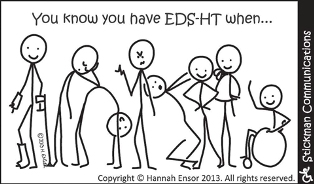
Hannah Ensor, Cartoonist, HMSA Patron and author of You know you have HMS/EDS when...
www.stickmancommunications.co.uk
This book is dedicated to all those who suspect they have Ehlers-Danlos Syndrome Hypermobility Type or have been diagnosed with the syndrome and seek both understanding and acceptance. My best wishes to you as you make sense of this complex condition and support with your ongoing life journey.
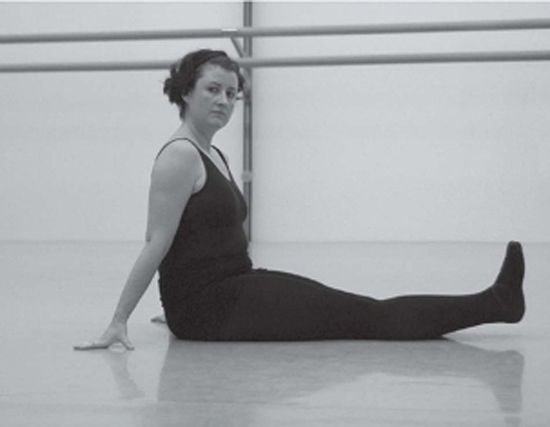
Contents
Foreword
Ehlers-Danlos Syndrome Hypermobility Type (EDS-HT) is a complex condition. It is often so much more than being bendy and in pain from multiple joint and soft tissue injuries, though coping with this can be difficult enough!
Since 2000, there has been an explosion of literature defining the problems associated with the syndrome. These can be physical or structural throughout the body, and related to disturbances of the nervous system, cardiovascular system, bowel, and bladder. Although there is a wealth of information easily accessible, it can still take a very long time before the penny drops and someone recognizes the diagnosis and points the individual in the right directions for help. Even then there can be reluctance among some (family members and medical personnel alike) to acknowledge the syndrome, the depth and breadth of its insult, and the psychosocial impact on an individuals wellbeing
The consequences can be over-whelming, thus making it hardly surprising that living with the syndrome can seem daunting.
Support and advice for patients and clinicians continues to grow, and from a number of sources and points of view. There can be no doubt that a multi-disciplinary approach to supporting people with EDS-HT is essential. So much knowledge has also come from people with EDS-HT sharing their experience of things that work for them as they explore self-management.
In the first edition of A Guide to Living With Ehlers Danlos syndrome, Isobel Knight brought something appealing and unique to the literature in the way she shared her experience both as a person with the condition and as a therapist. She covered issues from childhood, adolescence and adulthood, with an autobiographical approach, writing in a way that was meaningful to so many living with and/or wanting to understand the syndrome.
This second edition is no exception. Taking a multi-disciplinary approach, Isobels text is supported by commentary from health care professionals, other people with EDS-HT, and advice from experts at the charity Hypermobility Syndromes Association (HMSA). Basing things on her own experience while also reviewing the medical literature in depth, she once again takes on the breadth of medical issues. Isobel manages effortlessly to explore the different ways in which the condition can affect individuals, and covers the entire spectrum of treatment and self-management. The result is a fully up to date text that is rich in content, highly accessible, thoughtfully presented, and insightful.
Without having to worry about medical jargon, this is a book for anyone (layperson or professional) who wants to understand the personal impact of, and wants to be up to date with the clinical presentation and management of Ehlers-Danlos Syndrome Hypermobility Type.
Next page
